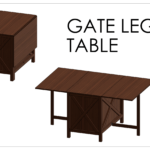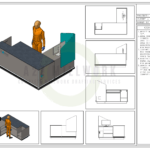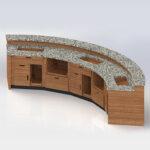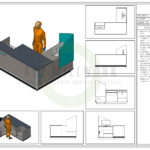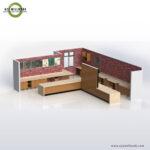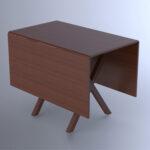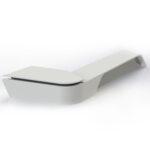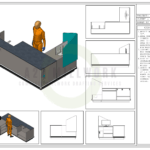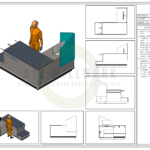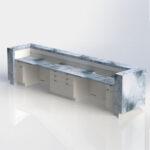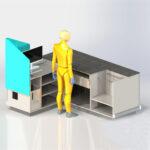There are numerous approaches to creating CAD, such as Parametric 3D Modeling & Direct Modeling. These approaches are helpful from different perspectives and elements like the design process and nature of model creation.
Engineers have long disputed the probities of parametric vs. direct modeling. Some of them like the freedom and flexibility of direct modeling, while others like the feature definition & dimensions control abilities associated with parametric systems.
Before proceeding further, let’s discuss what parametric and direct modeling is.
Parametric Modeling
Parametric modeling uses computer-aided design to make systems and objects that model component attributes with a real-life reaction. It is the innovation of digital models based on a string of algorithms called “parameters.” The model’s elements are developed automatically using the CAD software’s internal decision-making.
Parametric modeling is helpful for products driven by dimensions—consider standard office fare like desks and shelving or tools that can differ in size. Engineers can quickly and easily create different designs compositions with the parametric approach.
It is important to note that, for early beginners, parametric modeling is difficult and can take many years to master. In addition, it isn’t easy since it takes a systemic, mathematical approach to create 3D models. In contrast, direct modeling is more comfortable to learn and understand. Swapping between different designs and exploring various design variations is also reasonably straightforward.
Advantages of Parametric Modeling
- Parametric Modeling technologies are perfect for design tasks that involve exacting requirements and manufacturing standards.
- It also makes models with individual features that can be modified and changed- such as chamfers & holes- captured in the modern tree.
- It easily captures design intent for defining model behaviour.
- Superb integration with manufacturing processes, resulting in reduced production time.
- It is a quick definition and automatic creation of families of a part.
Disadvantages of Parametric Modeling
- Parametric 3D CAD may be overkill for designers to explore as many 3D concepts of an idea as quickly as possible during concept design.
- There is no stored history of such measurements in the program.
- The parametric 3D modeling program allows all identical features like holes to be easily modified.
- Parametric modeling takes more time to update when random design changes occur.
- It requires extensive training to master.
Direct Modeling
Direct Modeling is a normally used method to enhance the freedom and stability of the realistic model. Such qualities which stem straight from direct modeling are a part of the history-free approach. It indicates that, unlike parametric 3D modeling, all the parameters are not explained, and the components are not linked together in contact with one another. Instead, the geometric model face can be used, pushed, or pulled directly into a specific intended position as the designer wills. The modeling approach is compared to a modeling clay technique and is defined as the model’s design process or a part moved.
Unlike parametric modeling, where you need to make the final model in steps, direct modeling permits the geometry of the features to be changed without revising interim model stages.
You can capture and describe geometry quickly in direct modeling without bothering about constraints, features, & original design intent.
Advantages of Direct Modeling
- In direct modeling, features do not connect, and the modifications can be made even without any misconception of the breakage of the model.
- Changes can be done at any point in the modeling procedure.
- No feature tree, so it can work with generic CAD models (IGES/STEP files)
- It is an easy and quick innovation of new 3D models.
- No feature tree is required or kept, and the program can link straight with generic CAD models.
Disadvantages of Direct Modeling
- All the measurements are visible during the manipulation of the model geometry in direct modeling.
- There is no reserved history of such measurements in the program.
- There is no chance to draw an organization among such items in a direct modeling program.
- More fragile dimension-oriented editing.
- Deviating from the design plan is easy since no parameters specify the purpose.
Which one is better: Parametric Modeling or Direct Modeling?
In today’s time, the approach relies highly upon the design intent and present scenario of the continuous phase of the model to be treated. However, both types of approaches can result in relatively similar CAD output. This causes it quite challenging to choose between parametric 3D modeling program & direct modeling, but a combination of both programs is suggested for a better modeling experience and result; it is also important to remember that parametric 3D modeling program and direct modeling program are separate detailed programs, while new tools are being created which are beginning to integrate both approaches into one program. However, such programs are still in their babyhood. Therefore, they do not donate as many benefits as these two individually used CAD programs.
Conclusion
We expect this blog has provided you with some understanding of parametric and direct modeling. Neither method is intrinsically better than the other – which one to use typically depends on your individual business needs. Many prefer to take a combined approach.
A2Z Millwork Design LLC has been delivering 3D Modeling Services for over a time now. Our highly interactive and responsive team specializes in 3D Product & Asset Modeling Services. We note down every vital detail given by you and, in return, turn your vision into a real-life realistic or virtual reality. We also cater to various services connecting to efficient 3D Modeling and Designing services. If you need a 3D Modeling service, you can request a free quote!


